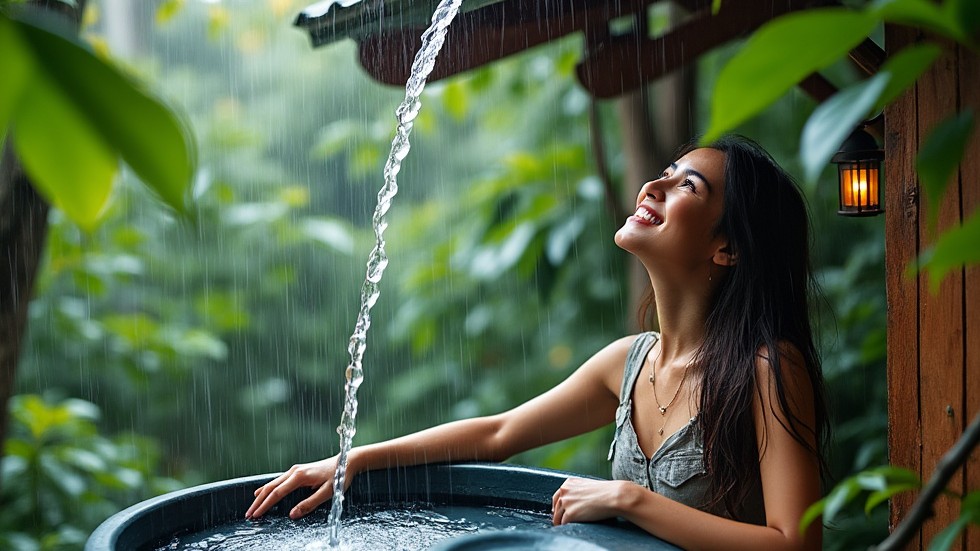Tiny House Off-Grid Rainwater Collection Systems Boost Eco-Sustainability
Ready to go even greener? Tiny Lair’s new guide to off-grid rainwater collection systems helps tiny house owners save money, conserve water, and live sustainably with easy-to-follow steps.

Set Up an Off-Grid Rainwater Collection System for Your Tiny House
If you're living (or dreaming of living) in a tiny house, chances are you've already embraced the idea of sustainability, minimalism, and self-sufficiency. But here’s one thing that might not be on your radar yet: collecting rainwater.
Yep, that’s right—rainwater harvesting is a key part of off-grid living, and it’s easier (and more affordable) than you might think. That’s why Tiny Lair just launched a complete guide to setting up an off-grid rainwater collection system for tiny houses. Whether you're new to tiny living or you’ve been in the game for a while, this guide will give you everything you need to get started with rainwater harvesting—so you can reduce your utility bills, minimize your carbon footprint, and live more independently. Check it out at https://tinylair.com/off-grid-rainwater-collection-tiny-houses/
Why Rainwater Collection?
Why even bother collecting rainwater? Well, for starters, it can drastically reduce your reliance on municipal water—something that’s not just good for your wallet, but also for the planet. According to the U.S. Environmental Protection Agency (EPA), using rainwater can conserve water resources, ease the pressure on local water systems, and reduce stormwater runoff. All in all, rainwater collection is a win for sustainability.
But it’s not just about the environment. Rainwater harvesting can also save you money. Imagine cutting down on your water bills by using rainwater for things like watering plants, flushing toilets, or even doing laundry. Plus, once your system is set up, it's a one-time investment that can save you money for years to come.
What’s in the Guide?
The Tiny Lair rainwater collection guide covers everything you need to know about setting up a system for your tiny home. It includes:
- The Basics of Rainwater Collection: How to capture, store, and filter rainwater for your everyday use.
- Components of the System: This includes your roof catchment surface, gutters, downspouts, storage tanks, and filtration systems.
- Legal Considerations: Some places have rules about harvesting rainwater, so it’s important to know what’s allowed in your area before you start.
- Budgeting: How much you can expect to spend, which typically ranges from $500 to $5,000, depending on the system’s complexity.
- Maintenance Tips: How to keep your system in working order for years to come, including cleaning gutters and checking for leaks.
What You Need to Know Before You Start
Before diving in, it’s important to check local regulations. In some areas, rainwater harvesting is encouraged, while in others, there are restrictions or even bans. It’s worth taking a little time to research the rules in your region to make sure you’re all set legally.
Next, you’ll need to pick the right components for your system. The most important element is your roof—this is where the rainwater will be collected. Make sure your roof material is safe for water collection; metal roofs are often the best option, as they’re durable and easy to clean.
From there, you’ll need to install gutters, downspouts, and a storage tank to collect the rainwater. You’ll also want a filtration system to ensure the water stays clean and safe for use. The guide walks you through all of this step-by-step, with practical advice for tiny house owners.
Maintenance and Longevity
Once your rainwater collection system is set up, it’s all about maintenance to keep it running smoothly. Clean your gutters regularly to prevent clogs, and make sure your filters are in good shape. These systems can last for decades if properly cared for, so the effort you put in will pay off.
Is It Worth It?
Absolutely. Collecting rainwater is one of the easiest ways to live more sustainably while reducing your reliance on public utilities. It allows you to be more self-sufficient, especially if you’re living in a remote area where access to municipal water can be unreliable. Plus, the cost savings add up quickly.
Tiny Lair’s guide is designed to help you build a rainwater collection system that fits your tiny house lifestyle—whether you’re just starting out or looking to improve your existing setup.
Ready to Get Started?
If you’re interested in building a more sustainable, self-sufficient tiny house, this guide is for you. Visit Tiny Lair at https://tinylair.com/off-grid-rainwater-collection-tiny-houses/ today to access the full guide and start your journey toward off-grid water independence.
{video_pr:link}

